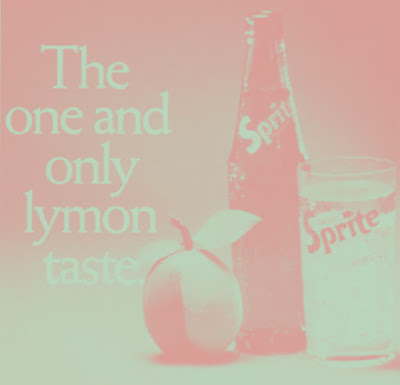For a British person on holiday in the United States, I don’t think we encountered a single situation over five days in New York where British and American words and idioms became confused – I think we absorbed the required knowledge when our plane entered US air space.
The only one we apparently missed was what we mean when we talk about lemonade.
Avoiding the smog [https://www.leighspence.net/2023/06/get-into-my-big-black-car-401.html], we took shelter in the Hard Rock Café in Times Square, formerly the lobby of the Paramount theatre, which is itself now office space. I had a Diet Coke with my Legendary Steak Burger, and when I was asked about another drink, I asked for a lemonade. Upon this, the server leapt into a routine about how, when British people ask for lemonade, what they actually want is Sprite, something that must have happened many times. I was asked if I wanted was Sprite, and I decided to say yes.
I was already aware that American lemonade is characteristically cloudy, still and sweet, made with fresh lemons, and is known as “cloudy lemonade” in the UK. “Our” lemonade is clear, fizzy and has a sharper, more citric taste and, as I now know, is not routinely sold in the United States, meaning the country has no reason to make the distinction. One drink I hoped to find while there was Arizona Ice Tea’s half-tea, half-lemonade “Arnold Palmer”, named after the golfer – in fact, it was a US gallon (3.78 litre) bottle that lasted the week, and it was lovely and sweet overall, despite the taste of the tea, well, clouding the lemonade. This is more than I could say for orange Fanta, the US version of which contains no juice, has the same sunset yellow colour as Lucozade and Irn-Bru, and tasted like them as well.
Then there is Sprite, which is not lemonade. Introduced in 1959 by Coca-Cola in West Germany as a clear, coloured, lemon-flavoured variant of Fanta, it was introduced into the US two years later as a competitor to 7-Up. Labels on Sprite bottles and cans term it a lemon-lime soda, but previous US packaging created a word: “Great Lymon Taste!” I since found that one US variation of the drink is “lymonade” – you can buy Sprite pre-mixed with lemonade, with “Sprite Lymonade Legacy” adding strawberry into the mix.
I wish I known about Sprite Lymonade before we ate at Hard Rock Café – it would have been the best of both worlds.



.jpg)
.jpg)
.jpg)


